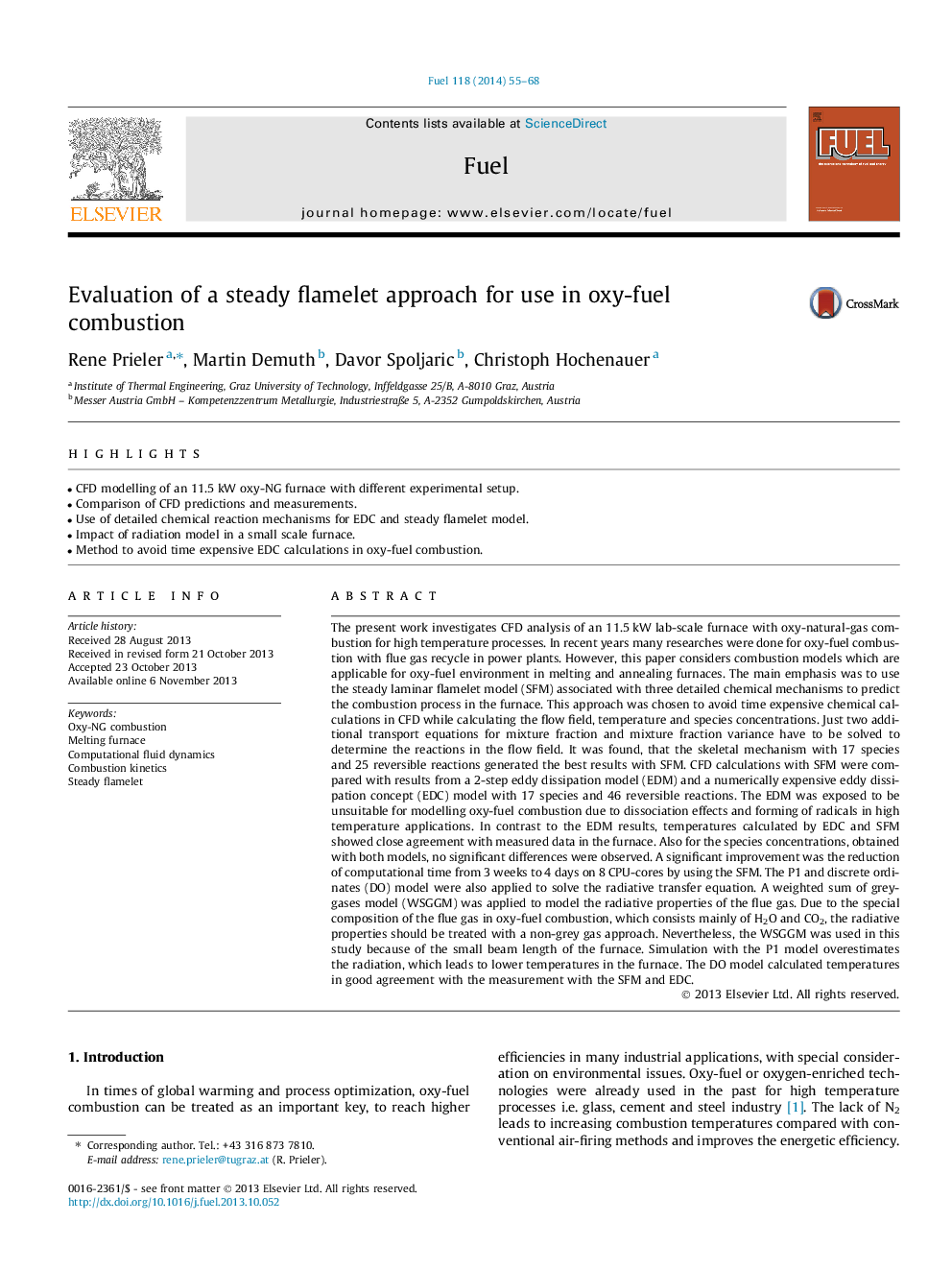| کد مقاله | کد نشریه | سال انتشار | مقاله انگلیسی | نسخه تمام متن |
|---|---|---|---|---|
| 6638360 | 461152 | 2014 | 14 صفحه PDF | دانلود رایگان |
عنوان انگلیسی مقاله ISI
Evaluation of a steady flamelet approach for use in oxy-fuel combustion
ترجمه فارسی عنوان
ارزیابی یک رویکرد پایدار فلماتی برای استفاده در احتراق سوخت اکسید
دانلود مقاله + سفارش ترجمه
دانلود مقاله ISI انگلیسی
رایگان برای ایرانیان
کلمات کلیدی
موضوعات مرتبط
مهندسی و علوم پایه
مهندسی شیمی
مهندسی شیمی (عمومی)
چکیده انگلیسی
The present work investigates CFD analysis of an 11.5Â kW lab-scale furnace with oxy-natural-gas combustion for high temperature processes. In recent years many researches were done for oxy-fuel combustion with flue gas recycle in power plants. However, this paper considers combustion models which are applicable for oxy-fuel environment in melting and annealing furnaces. The main emphasis was to use the steady laminar flamelet model (SFM) associated with three detailed chemical mechanisms to predict the combustion process in the furnace. This approach was chosen to avoid time expensive chemical calculations in CFD while calculating the flow field, temperature and species concentrations. Just two additional transport equations for mixture fraction and mixture fraction variance have to be solved to determine the reactions in the flow field. It was found, that the skeletal mechanism with 17 species and 25 reversible reactions generated the best results with SFM. CFD calculations with SFM were compared with results from a 2-step eddy dissipation model (EDM) and a numerically expensive eddy dissipation concept (EDC) model with 17 species and 46 reversible reactions. The EDM was exposed to be unsuitable for modelling oxy-fuel combustion due to dissociation effects and forming of radicals in high temperature applications. In contrast to the EDM results, temperatures calculated by EDC and SFM showed close agreement with measured data in the furnace. Also for the species concentrations, obtained with both models, no significant differences were observed. A significant improvement was the reduction of computational time from 3Â weeks to 4Â days on 8 CPU-cores by using the SFM. The P1 and discrete ordinates (DO) model were also applied to solve the radiative transfer equation. A weighted sum of grey-gases model (WSGGM) was applied to model the radiative properties of the flue gas. Due to the special composition of the flue gas in oxy-fuel combustion, which consists mainly of H2O and CO2, the radiative properties should be treated with a non-grey gas approach. Nevertheless, the WSGGM was used in this study because of the small beam length of the furnace. Simulation with the P1 model overestimates the radiation, which leads to lower temperatures in the furnace. The DO model calculated temperatures in good agreement with the measurement with the SFM and EDC.
ناشر
Database: Elsevier - ScienceDirect (ساینس دایرکت)
Journal: Fuel - Volume 118, 15 February 2014, Pages 55-68
Journal: Fuel - Volume 118, 15 February 2014, Pages 55-68
نویسندگان
Rene Prieler, Martin Demuth, Davor Spoljaric, Christoph Hochenauer,
